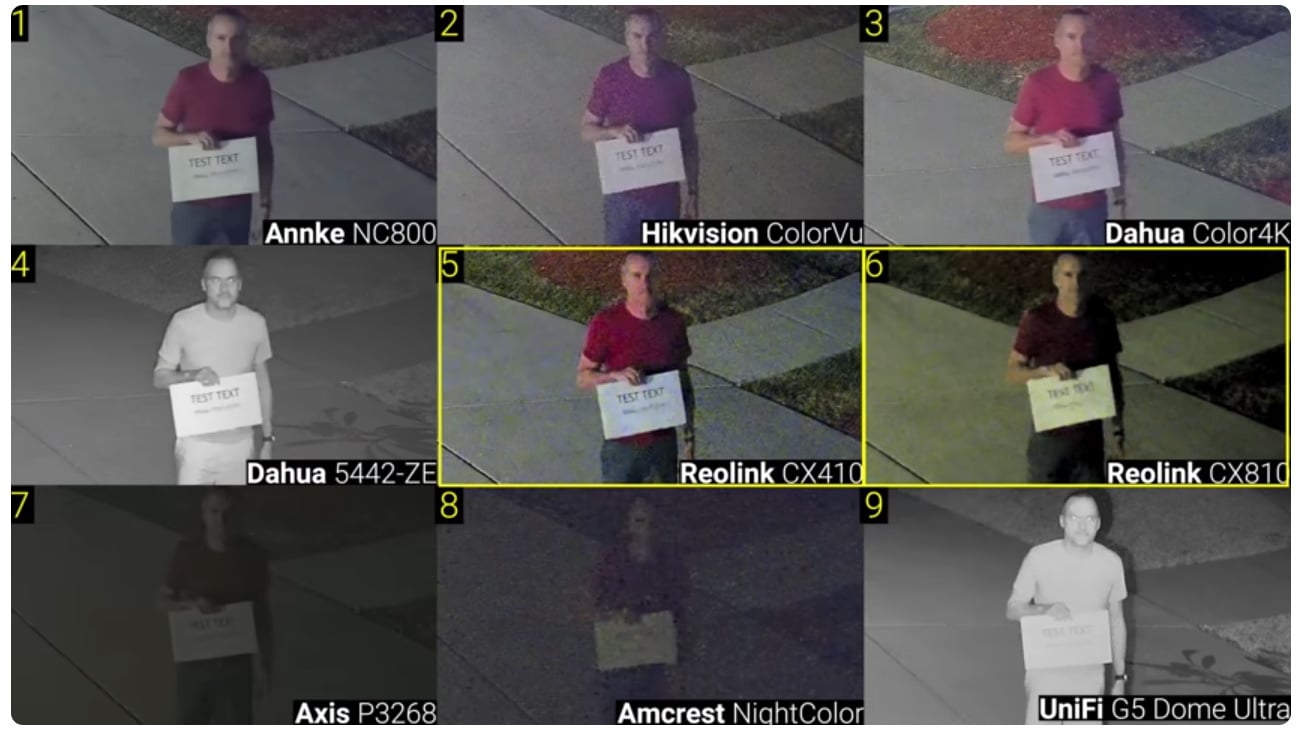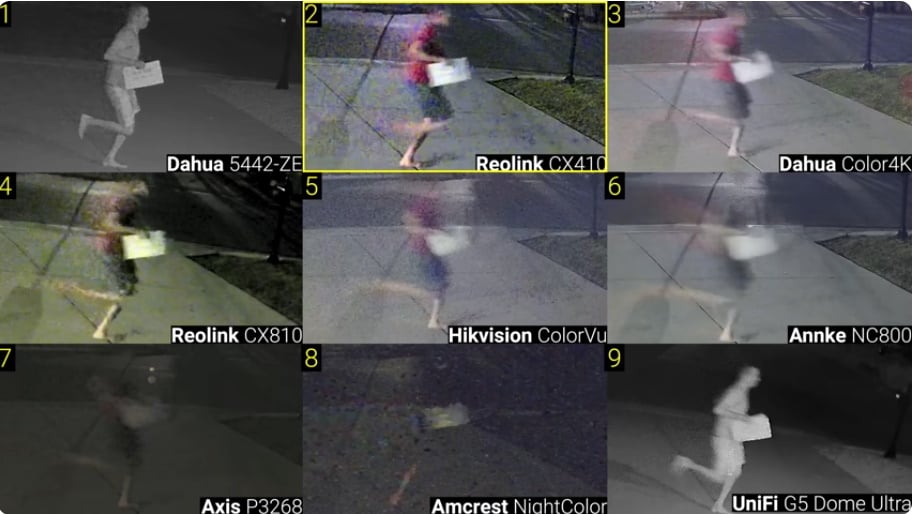It would be amazing if it doesn’t disintegrate if it rains, too.
I use cheap and cheerful cameras with Ingenic SOCs and flash an open source firmware thingino on them.
List of supported cameras increases fairly rapidly
Thanks for the trip. Any recommendations for best value for money hardware?
The comments here are interesting, as I’m helping with a project developing the software stack for mini servers we hope to sell that are preconfigured with Home Assistant (home automation) and Frigate NVR (camera control and recording) with local storage, local control, and no cloud component.
The hardware we’re using for prototyping are off-lease Dell 7050 Micros running Proxmox, with 500gb Crucial MX500 ssds and an NVME Coral TPU that Frigate uses for object detection, which reduces CPU usage. 500gb is enough, because Frigate can be set to auto delete recorded clips after a set period of time, and clips can easily be saved.
Frigate can be installed via docker or as an add-on to Home Assistant. If you want to use Home Assistant, you can install Home Assistant OS directly on the SSD via these instructions.
We’re using Amcrest WiFi cameras (IP4M-1041B) that connect to an on-board WiFi network controlled by an OpenWRT VM that uses the WiFi card in the system (not the ones that come with the Dells). Everything on our systems is locked down by an Opnsense firewall vm, so it should be safe to use even in an existing unsecured network.
Personally, for my own system, I’ve been running 4 Amcrest ethernet turret cameras (IP5M-T1179EW) for about 4 years now with no problems. You just need a cheap PoE switch (mine was $20) and then run some cables.
To use Frigate, the cameras must support both ONVIF and RTSP. Pro tip: the Amcrest Smart Home line of cameras won’t work - you need a camera with a built-in web server for direct configuration.
For remote access, you could set up Wireguard (via an official Home Assistant add-on), or you could pay Nabu Casa (Home Assistant’s parent company) $65/year (or 75 EUR), enter your credentials in the Home Assistant app and you’re good to go, while helping fund future Home Assistant development.
You are my kind of admin, so, any suggestions on hardware that use starlight sensors? Or anything comparable in low light with color?
Kudos to the guy sharing his expertise for free while working on something similar they’re trying to profit from
Very refreshing to see.
What is the name or your project? I’m interested in being a customer. When do you hope to have the first product released?
If you consider alternatives beyond out-of-the-shelf, I’d recommend your own DIY IP camera. A Raspberry Pi (or something similar, such as Orange Pi), an IR camera module, an UPS and a protective shell case are the minimal hardware requirements for a cheap camera built by yourself. You’ll have total control over the software, you’ll be allowed to choose the OS, the software, every aspect of the camera, something that’s not possible with out-of-the-shelf IP cameras.
Yes, this.
And prob not what op is looking for but I also have a bunch of esp32 cams, different PCBs and with different sensors/lenses.
They ain’t much but also cost like 3 monies with shipping (and is enough to eg normally recognise people etc).


I’ve had four cameras running for a few years, streaming over RTSP and powered over ethernet. Works well!
Is this something a complete novice could do, with reasonable effort and cost? If so would you be able to eli5, or point me in the direction of somewhere that does?
Ideally, for my current situation anyway, I’d like to set up a camera indoors by a window (with IR switched off and a proper mount) and be able to see what it sees from a device (phone pc or even dedicated pad if it helps with security) in the other room, and if it can also record and save the video locally for me to be able to access from the remote device, that’d be good too. Privacy and security of the data are top priority.
Every time I start looking in to it my brain gets completely overwhelmed by options and information and scrambles, and I have to back away 😑 I’d love for there to be a way to set this up that was near as straightforward as the privacy abusing options…
I self-host and dabble with this stuff. Im an engineer for more than a decade.
But I really struggled to find a solution that has a really high uptime with minimal maintenance. Ive set up some raspberry pi projects, including cams. Why would I want video to transfer to some company?
But the trade offs were significant. Every few weeks, there was a new problem. Maybe my router. Maybe my internet. Maybe the Pi. Maybe something else. Maybe it’s my VPN when I’m trying to dial into the network. Maybe it’s my phone app no longer seeing the device. Maybe a update broke it. Maybe God hated me that day.
After six months and spending 2-3 hours a month maintaining it, I burned out and just bought an off-the-shelf solution with a mobile app.
Of course, I only use it for security and it doesn’t exist in the house. It grosses me out, but it’s been two years of plug-and-play and just working without setup.
It’s not too difficult, I figured it out and I eat crayons.
Here’s the software I use but there are other options: https://github.com/BreeeZe/rpos - That runs on the camera Pi and provides the video stream.
I use a Pi, a camera module like this https://www.raspberrypi.com/products/raspberry-pi-high-quality-camera/ and a suitable lens. You can get cheaper camera modules, IR modules, etc.
Also, something like this to power it: https://www.tp-link.com/us/business-networking/omada-switch-unmanaged/ds105gp/ You could just use a regular switch and power the Pi with a power adapter if that works better. My cameras are all ceiling mounted so having one cable for data and power made sense for me.
I use this to split the ethernet into power and data when it reaches the Pi: https://www.amazon.com/UCTRONICS-PoE-Splitter-USB-C-Compliant/dp/B087F4QCTR/ref=pd_lpo_d_sccl_2/130-2310467-3870744?pd_rd_w=l0O0u&content-id=amzn1.sym.4c8c52db-06f8-4e42-8e56-912796f2ea6c&pf_rd_p=4c8c52db-06f8-4e42-8e56-912796f2ea6c&pf_rd_r=TNA6SF008RVJ5A1Y5V97&pd_rd_wg=4ITEg&pd_rd_r=e6c424de-42a7-4d27-974f-3f129d2bdd02&pd_rd_i=B087F4QCTR&th=1
Then I have this running on a Linux VM to collect the camera feeds and display them in a web browser: https://github.com/motioneye-project/motioneye
You’ll also need a case, my solution was to buy a metal Pi case and mount the module onto that, feeding the ribbon cable back into the case.
If you decide to go ahead and need help, just ask.
Oh wow, thanks so much for all the info, I really appreciate it! I’m bookmarking you reply and all the links, but it’s a bit much for me to process right now lol (I saw your comment about pretty much what I want to set up and just had to ask, fully meaning to get in to it, but it’s been a long morning and my brain is now mush)
Just to give you an idea, I’ve never set up or even used a Pi or used Linux, I’ve done very basic pc building and troubleshooting, but have no programming knowledge, so when I said novice I meant it 😂 I’m mostly good at following directions as long as they’re clear. Are there any manuals that would tell me how to put all the different parts you mentioned together?
I’ve used a ton of ubiquity unifi cameras and they have a solid range on pricing. I think you need the unifi software to commission them though. For what it’s worth they don’t use the cloud for storage and don’t require any sort of subscription.
Ubiquity is the definition of vendor lock in.
Right. I only mentioned them because they don’t require a sub and you can store everything locally.
Regular IP cameras don’t require a sub and let you store everything locally (even to the point of a micro SD in the camera for backup).
Ubiquity cameras are ridiculously over priced for their quality. They charge $140 for a worse camera (image quality/ features) than a $40 ip camera that supports ONVIF so works with open source Linux NVR software.
This just isn’t true and I love an open source solution as much as the next guy but for ease of use, features and image quality you could do a lot worse. We use axis cameras where I work and they’re ridiculously over priced imo I understand that there are IP cameras that don’t require subs and have local storage but I offered my suggestion in case those were the major hold ups for OP.
Out of curiosity what’s a solid $40 outdoor IP camera with great image quality and features?
Hikvision has a $34 4 mp turret camera that outperforms the $130 2 MP Ubiquity in both dark and brightly lit environments. You can get them with color night vision or IR. Feature wise you can use them stand alone: you connect and control them with a web browser. You don’t need to buy anything else. They have built in motion detection and will save to a microsd card. I use an NVR, but it’s nice to have that feature if you are just getting started.
Same with Dahau. I like Hikvision for its web UI. But as I’ve already said, I don’t trust them and block their Mac/IP at the router. Ideally you want them on their own vlan.
Higher resolution doesn’t necessarily mean a better picture here. From what I can see in watching videos from this camera is that the bitrate is pretty low and the image is decent but not great. Without a doubt I get a better picture from a g3 flex and it’s tiny. It’s okay if you don’t like ubiquity hardware but it seems more like you just want to bash on ubiquity than actually make a fair comparison.
The only outdoor camera I have is an Amcrest AD110 doorbell camera and it is ok. Has some network connectivity issues occasionally but a restart seems to fix them. I plan on eventually getting some Amcrest IP8M-T2599EW when my budget allows.
As far as indoor cameras I use 4332027115 and they work very well. Both the AD110 and my indoor cameras are in blue iris and home assistant.
I had one of these years ago. I used it as a baby monitor and got a full refund when I discovered that the camera had security issues that caused the whole internet to be able to watch, pan/tilt, talk back, etc to my (now ex wife) when she was breast feeding.
Axis makes good (the best) IP cams, I use them commercially, they’re pretty much the gold standard. Super fucking expensive though so probably not worth it for home use but you might be able to pick up something 2nd hand.
I’ve had great experience with Axis in the past. However in the past they used to have planned obsolescence where the flash they used had a very limited number of write cycles. With the Linux based OS they run it writes to the flash all the time. This would cause the thing to start dropping writes and misbehave. When ran 24/7 they usually died after about 4 years. The place I worked at just threw them away and replaced them whenever that happened, to not have downtime for cameras. Once I asked if I could have a couple to diagnose the fault and I found out the flash was out of write cycles on all of them. Maybe they are better nowadays, but it was pretty fucked up to see such expensive cameras be destroyed because of a few cents of flash.









